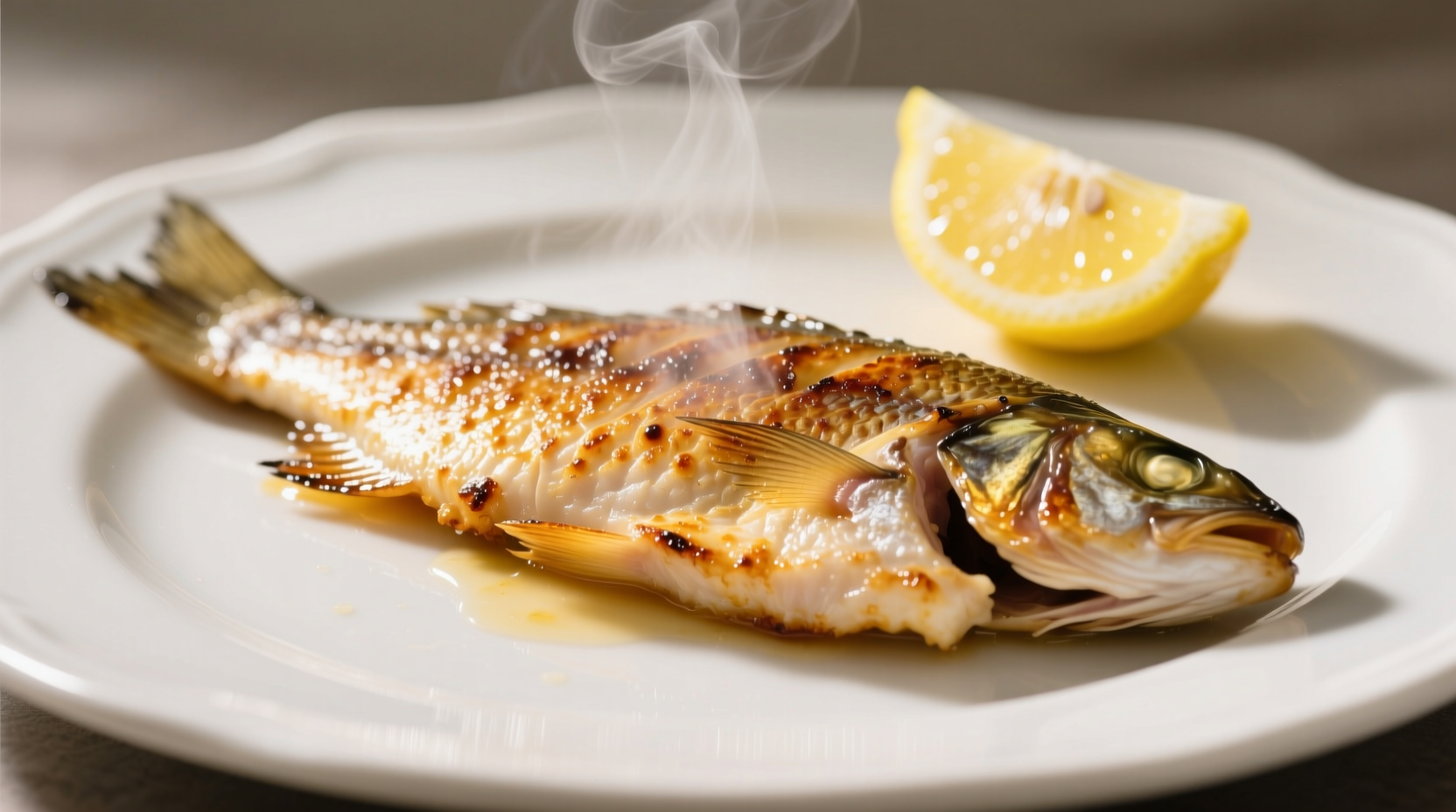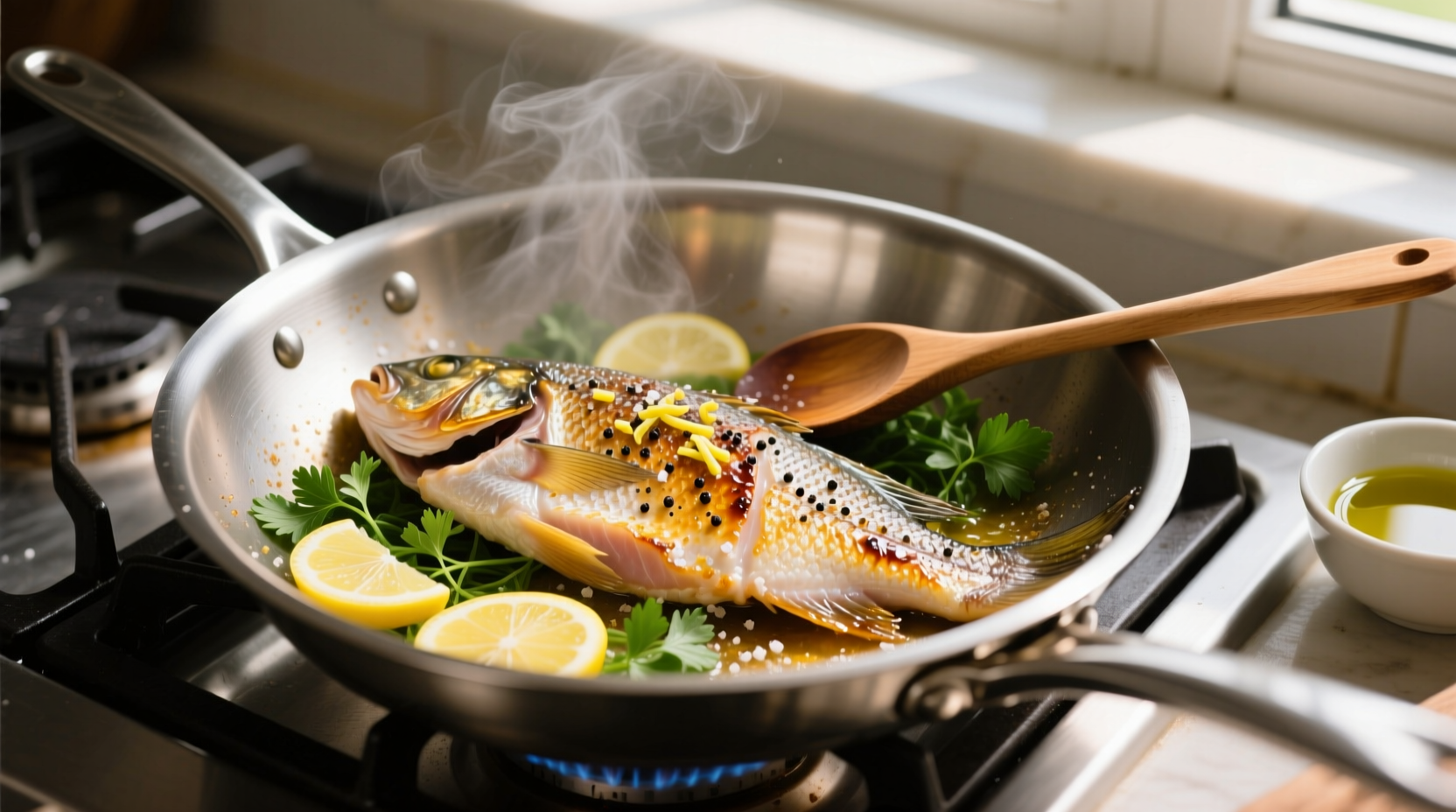Mastering stove top tilapia cooking delivers restaurant-quality results with minimal equipment. This lean, mild-flavored fish cooks quickly but requires precise timing to avoid dryness. Our comprehensive guide reveals professional techniques for flawless pan-seared tilapia every time—no special tools needed, just your standard kitchen skillet and attention to critical temperature cues.
Essential Tools Before You Start Cooking
Before handling your tilapia, gather these kitchen essentials. A heavy-bottomed skillet (cast iron or stainless steel) ensures even heat distribution crucial for proper searing without hot spots. Have an instant-read thermometer ready—this is non-negotiable for perfect doneness. Paper towels for drying fillets, a fish spatula with thin edge for delicate flipping, and medium-high heat tolerance complete your toolkit. Avoid non-stick pans which prevent proper browning and flavor development.
Selecting and Preparing Quality Tilapia
Choose fresh tilapia fillets with firm texture and mild ocean scent—never ammonia-like odors. Frozen fillets work well if properly thawed in refrigerator overnight. Pat each fillet thoroughly dry with paper towels; moisture is the enemy of proper searing. For best results, bring fish to room temperature 15 minutes before cooking. Season simply with salt and pepper 5 minutes prior to cooking—adding salt too early draws out moisture. Consider light seasoning combinations like lemon zest and paprika for enhanced flavor without overpowering the delicate fish.
| Fillet Thickness | Prep Time | Cook Time Per Side | Total Time |
|---|---|---|---|
| ½ inch (1.3 cm) | 10 minutes | 3-4 minutes | 8-10 minutes |
| ¾ inch (1.9 cm) | 12 minutes | 4-5 minutes | 10-12 minutes |
| 1 inch (2.5 cm) | 15 minutes | 5-6 minutes | 12-14 minutes |
Cooking times vary based on stove heat output and pan material. Always verify with internal temperature rather than relying solely on timing.
Step-by-Step Stove Top Cooking Process
Heat 1-2 tablespoons of high-smoke point oil (avocado or canola) in your skillet over medium-high heat for 2-3 minutes until shimmering but not smoking. Carefully place dried tilapia fillets in the pan, presentation side down if skin-on. Resist moving the fish for the first 3 minutes to allow proper sear development. Gently lift an edge with your spatula to check for golden browning before flipping. Cook second side until fish reaches FDA-recommended 145°F (63°C) internal temperature. The USDA Food Safety and Inspection Service confirms this temperature ensures safe consumption while maintaining optimal moisture.

Visual and Tactile Doneness Indicators
While thermometers provide definitive accuracy, learn these visual cues: properly cooked tilapia turns opaque white throughout and flakes easily with fork pressure. Press gently on the thickest part—perfectly cooked fish offers slight resistance then springs back. Undercooked tilapia remains translucent and doesn't flake; overcooked fish becomes dry and separates into hard flakes. Note that carryover cooking continues for 2-3 minutes after removal from heat, so pull fish at 140°F (60°C) for perfect final temperature.
When Stove Top Beats Other Cooking Methods
Stove top excels for tilapia when you need quick weeknight meals or crave that professional sear impossible in ovens. Unlike baking which risks dryness, pan-searing creates flavorful crust while preserving interior moisture. Compared to grilling, stove cooking offers precise temperature control essential for delicate fish. This method particularly shines with thinner fillets under 1 inch thick where oven cooking would overcook edges before center reaches proper temperature. For thicker cuts, finish in 350°F (175°C) oven after initial sear.
Proven Flavor Enhancements Without Overcomplicating
Elevate your tilapia with these chef-tested finishing touches: a squeeze of fresh lemon juice just before serving brightens flavors without acidity overpowering the fish. A pat of herb-infused butter melting over hot fillets creates instant sauce. For subtle heat, add red pepper flakes to your oil before cooking. Remember that tilapia's mild flavor serves as perfect canvas—avoid heavy sauces that mask its delicate taste. The American Heart Association recommends baked or pan-seared fish preparation methods like this for heart-healthy diets.
Avoid These 3 Common Tilapia Cooking Mistakes
Cooking errors that ruin otherwise good tilapia: overcrowding the pan causes steaming instead of searing; moving fish too soon creates stuck, torn fillets; and overcooking by just 60 seconds turns moist fish dry. Never rinse raw tilapia before cooking—this spreads bacteria and adds surface moisture preventing proper browning. Also avoid excessive seasoning which overwhelms the fish's natural flavor profile. For food safety, always clean surfaces that contact raw fish with hot, soapy water immediately after use.
Serving and Storage Best Practices
Serve immediately after resting 2-3 minutes for optimal texture. Pair with lemon-dressed greens or roasted vegetables for balanced meal. Store leftovers in airtight container for up to 2 days—reheat gently in 250°F (120°C) oven to preserve moisture. Never microwave cooked fish as it creates unpleasant texture. For meal prep, cook fillets slightly underdone then finish heating when ready to eat. According to the National Oceanic and Atmospheric Administration, properly stored cooked fish maintains quality for 3-4 days under refrigeration.











 浙公网安备
33010002000092号
浙公网安备
33010002000092号 浙B2-20120091-4
浙B2-20120091-4